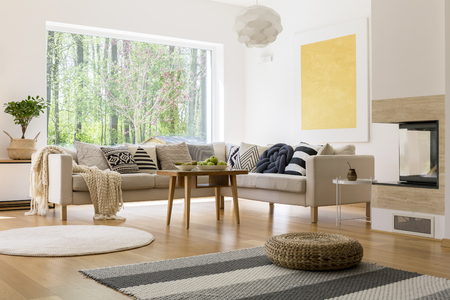
When it comes to designing an interior, considering “texture” is often an afterthought. Texture is an element of design that can be defined as “the sensations that are evoked by the external surface that one can feel through touch.” In fact, think about how it feels to sink your feet through a plush carpet, or the feeling of a leather couch beneath you. Texture can be perceived as either tactile or visual. Tactile is the actual feeling of an object such as smooth or rough. Visual texture is what one thinks an object may feel like, and visual texture assumptions are made based on the material of the object. So, you may be wondering what the importance of texture in interior design is? We are here to tell you in two brief points; let’s take a look!
Texture Adds Visual Weight
Texture adds visual weight to a space. Rougher surfaces can make a space feel intimidating while softer texture can give off a luxurious feel. When a designer mixes the two textures together in a space, it is often to create balance. Since rougher surfaces can feel heavier, we recommend implementing a distance/space between the two pieces to help harmonize the design.
Texture Can Create Balance
Of course, when using texture in your design, be sure to keep in mind balance. While contrast is essential to create emphasis, you do not want to go crazy by using too many textures. Utilize no more than three textures in one space because using too many makes the design scheme feel overwhelming. Be sure to only use textures to highlight the most important areas in the room. You can easily implement texturized decor in your home through architectural elements, furnishings and decor items such as rugs and textiles.
What are your thoughts on texture? Do you find yourself using it a lot in your design or not often enough? We would love to hear your thoughts below in the comment section.
